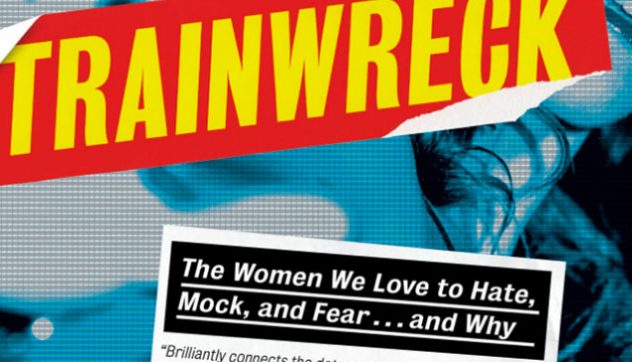If you keep up with celebrity gossip or entertainment news, you’ve seen her: the “promising,” talented ingénue who just can’t stay away from drugs or alcohol, who “parties too much,” and/or whose drunken antics or various body parts have been photographed by the paps — forever immortalized in “embarrassing” candid photos that show up on the internet within hours. She’s the “trainwreck,” and, as feminist writer (and Global Comment contributor) Sady Doyle argues in a new book of the same name, the ways in which stories about these “out-of-control” young starlets are consumed and recycled should alarm feminists and celebrity gossip fans alike.
The current iterations of the “trainwreck,” as constructed by media-heavy celebrity culture in the Western world, tend to have several characteristics in common. As Doyle explains in Trainwreck’s preface, media narratives and public perceptions of the celebrity trainwreck tends to focus on a very specific type of woman: “Say the word ‘celebrity trainwreck’ and the image immediately appears: Young, pretty, most likely blonde, and in some degree of high-gloss disarray, pinned between the club and the door of her limousine by a wall of flashing cameras. She’s drunk, or she’s high, or she’s naked, or she’s crying—or she will be, anyway, by the end of the night. The cameras are there to testify to her impending doom. They’re there so we can watch it happen. Hence the etymology, actually […] this person is going to suffer, horribly, exceptionally, and you won’t look away, because you enjoy it.“ From there, Doyle takes readers on a vastly troubling journey into a media hell — and its audience, the viewing/Tweeting/blogging/clicking public — that not-so-secretly wants to see women of a certain level of fame and notoriety fall hard.
Should one make the mistake of thinking that the figure of the trainwreck — and the lessons about good versus bad behavior that she supposedly imparts to young women — is a new phenomenon, Doyle convincingly argues that the figure herself has foremothers, some of whom might seem to be a bit of a reach at first glance. If you’re raising an eyebrow at the thought of Mary Wollstonecraft as the Paris Hilton of her day, or the lineage that connects the public display of mentally ill women during the 19th century to the art world’s and the media’s treatment of SCUM Manifesto author Valerie Solanas in the 1970s, you’re not the only one — but Doyle smartly challenges readers’ initial reactions with several interlude mini-chapters in Trainwreck.
In these “Anatomy of a Trainwreck” segments, Doyle compellingly connects various famous (or infamous) women and the cruel treatment that they faced for daring to step outside of the bounds of ideal womanhood — among them writer Charlotte Bronte, Charcot’s “hysterics,” memoir author Harriet Jacobs, and singer Billie Holliday — to the current media and public treatment of the modern era’s “trainwreck” women. Unsurprisingly, the way that current trainwrecks are treated is still cruel and judgmental. While some skeptics may blanch at approaching the media’s treatment of young starlets behaving “badly” from a feminist angle, the figure of the trainwreck deserves to be analyzed through that lens because of what that figure says about “correct” versus “incorrect” womanhood — and because gruesome tales of famous trainwrecks are often used to keep other women from behaving in ways deemed unacceptable for their gender.
Trainwreck explains how — and, just as crucially, why — the struggles of “troubled” young starlets continue to be so compelling to the media and the public, and what the continued framing of the trainwreck says about Western society and media. Doyle incisively tackles this phenomenon from several angles to explore some of the tougher questions about celebrity culture and infotainment media in the digital age, and does so in a witty, readable, and engaging way. While there were a few sections of the book that I wished would cover certain famous trainwrecks in further depth (Doyle’s too-short take on rocker Courtney Love as a “monster,” as related through her own 7th grade decision to dress up as Love for Halloween, was fascinating), overall, I found Trainwreck to be an enthralling and informative read on a seemingly light — yet vastly troubling — topic.


Love animals after all they are also creation of God.